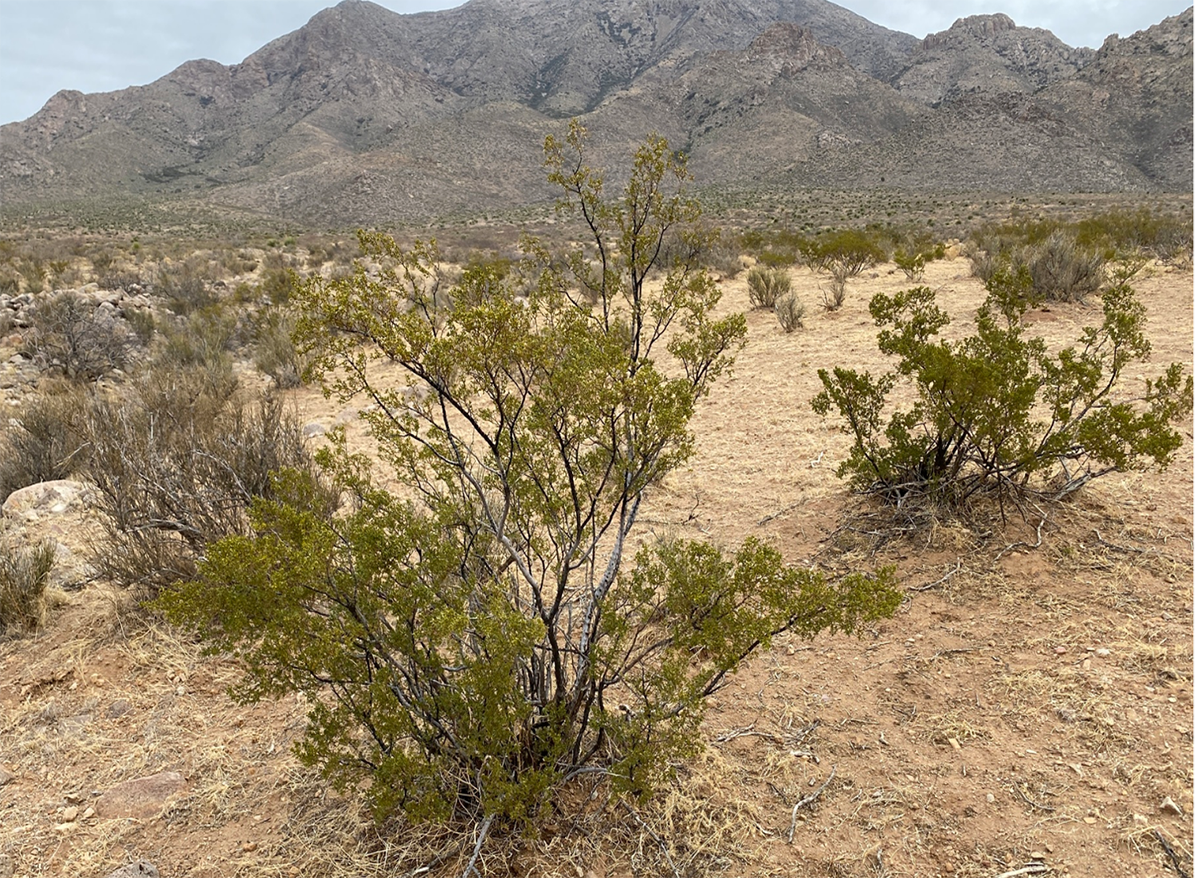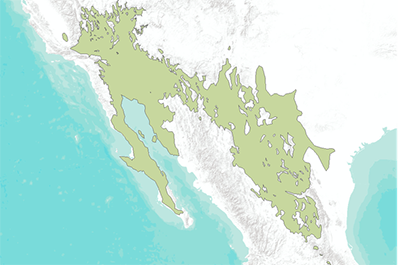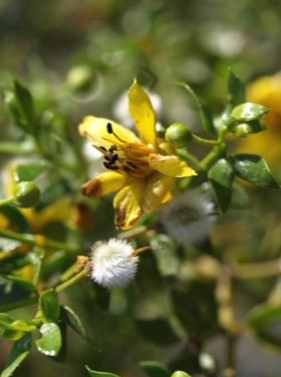Creosote Bush

About
Sniff, sniff — what’s that lovely smell when it rains? Oh, it’s creosote! This desert shrub emits a strong fragrance when moisture is in the air and on its leaves — the signature scent of a drizzly, desert afternoon. That’s the smell of the plant’s survival tactic and the healing medicine that this culturally and ecologically important plant provides.
Adaptations
Creosote bushes are a flowering evergreen shrub, which means that year-round they are green and have leaves. They have tiny, pointed leaves and tiny yellow five-petal flowers. Plant leaves have microscopic “mouths” called stomata, which is how a plant breathes in carbon dioxide and exhales oxygen. Creosote’s little leaves are great water savers because they release less moisture than a big leaf. This is very helpful in a desert where it doesn’t rain very often. The waxy coating on their leaves helps prevent water loss as well. Chemicals on the leaf’s surface are released when it gets wet — this is where their iconic scent comes from! These fragrant chemicals can drop into the soil and inhibit other large plants from growing too close. Creosote’s roots spread deep into the ground so that they can suck up water from the water table and having a protected area around the plant prevents competition from other deep-rooted plants (but allows shallow-rooted wildflowers to pop up in that space). That means more water for the creosote’s roots to slurp up!
Food Web
These plants are producers — they take energy from the sun and nutrients from the soil and water which they use to grow. Not many animals eat creosote leaves, but jackrabbits will if there aren’t any other options. Desert woodrats (aka packrats) and kangaroo rats love to eat creosote seeds, while over 20 species of bees visit the flowers for pollen or nectar. The flowers are a good snack for animals like the chuckwalla, desert iguana, and other herbivorous reptiles.

Habitat and Range
Creosote lives in the Mojave, Sonoran, and Chihuahuan deserts of North America and can be found in southeastern California, Arizona, southern Nevada and Utah, as well as New Mexico and Texas. In Mexico they can be found in the states of Chihuahua, Sonora, Coahuila, Nuevo Leon, Zacatecas, Durango and San Luis Potosi. These plants grow in well-drained soils, and flat plains.
Map source

Family Life
Creosotes grow flowers and fuzzy, white seeds which drop to the ground. These seeds then sprout and can grow until they are about 3-5 feet tall. However, not all creosote plants start this way. As they get older, some creosotes’ main stems will begin to split and send out new stems nearby from underground roots thus creating clones. This often creates a circle of clones genetically identical to the original plant. One of the oldest living organisms on earth is the King Clone creosote ring in the Mojave Desert. This colony has been estimated to have been alive for around 11,700 years!
Glossary
- Stomata: A tiny pore in the skin of a leaf or stem of a plant, allowing gases into and out of the plant.
- Producers:
- Plants which take the sun’s energy and transform it into energy and food for themselves and for animals to eat.
- Antimicrobial:
- Stopping or slowing the growth of microorganisms like fungi, bacteria, and viruses.
- Antioxidant:
- Neutralizing harmful molecules (free radicals) that can damage cells in the body.
Fun Facts
- If you cup your hands around your mouth and breathe on a creosote, you can smell its unique perfume. Many people like to say it is the smell of desert rain.
- This plant, called ṣegoi (pronounced shu-gee) in Tohono O'odham, has long been used, and still is, as a medicinal plant for Native American groups as well as Mexicans in the region, with more than 50 traditional uses. It contains antimicrobial and antioxidant properties but must be used wisely as it can be toxic.
Conservation
Creosote is not threatened or endangered.
At The Museum
Use all your senses to find creosote growing throughout the Museum, the Tucson area, and beyond.










